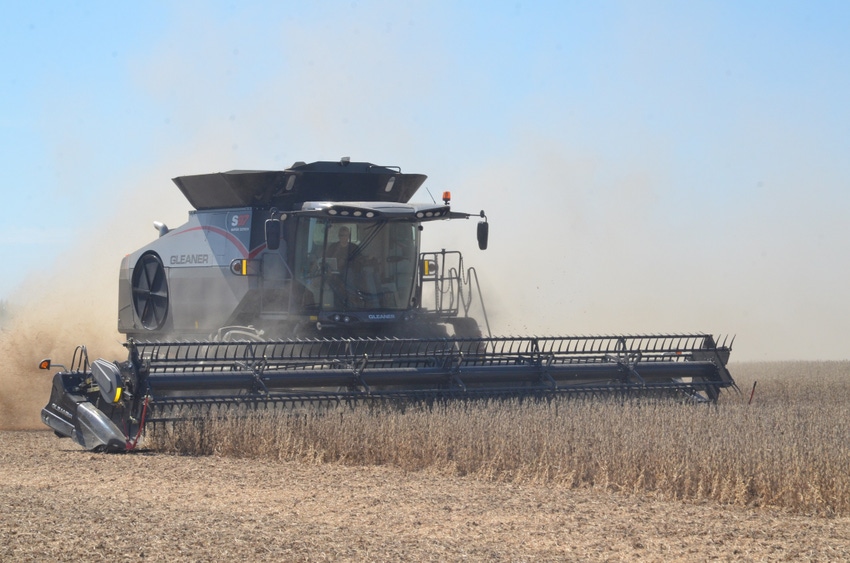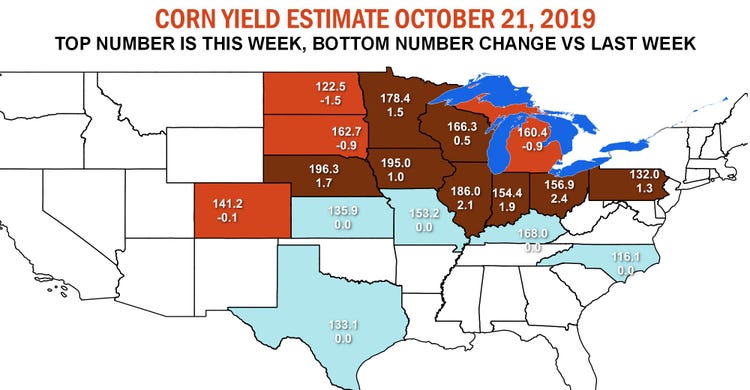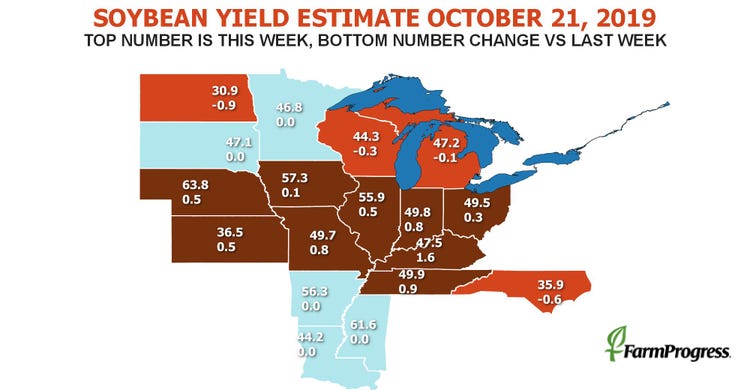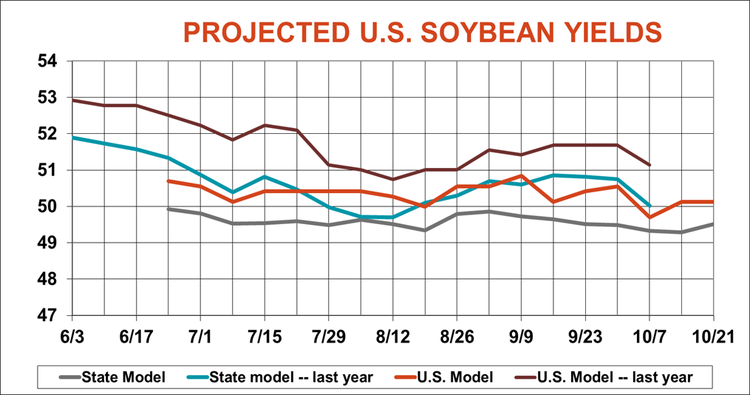
The 2019 corn harvest is still sputtering along, according to USDA, which just released its latest round of crop progress data Monday afternoon. Soybean harvest progress has fared somewhat better, meantime, after nearing the halfway point this past week.
USDA has marked 30% of this year’s corn harvest as complete by October 20, according to its latest report. That’s ahead of the prior week’s tally of 22% but below analyst expectations of 34%. Harvest pace is now further behind that of recent years, with a five-year average of 47%.

And 86% of this year’s crop is now fully mature, which is better than the prior week’s total of 73% but well behind 2018’s pace of 99% and the five-year average of 97%.
But USDA saw slight improvement to corn crop quality last week, adding a point to reach 56% in good-to-excellent conditions. That bucked analyst expectations, which assumed the agency would lower that number to 54%. Another 30% is rated fair (unchanged from a week ago), with the remaining 14% rated poor or very poor (down a point from last week).
“Corn conditions improved last week as harvest slowly picked up, adding nearly a bushel per acre to yield potential according to our production models, which show average yields edging above 169 bushels per acre,” according to Farm Futures senior grain market analyst Bryce Knorr.

Improvement was noted across the entire length of the I-80 corridor from Nebraska to Pennsylvania, Knorr notes. Wisconsin and Minnesota also improved, but other states in the path of the winter blast earlier this month declined. That included the Dakotas and Colorado, with conditions in Michigan also moving lower. States to the south, where harvest is more advanced, were unchanged.
Soybean harvest showed more momentum, with a fifth of the crop getting combined this past week. That places total progress at 46%, putting this year’s pace close to 2018’s 51% but still moderately behind the five-year average of 64%. Ninety-four percent of the crop is dropping leaves, versus last year’s pace of 98% and the five-year average of 97%.

From a quality standpoint, soybeans held their ground this past week, with 54% of the crop still in good-to-excellent condition. Another 32% of the crop is rated fair, with the remaining 14% rated poor or very poor – all unchanged from a week ago.
But despite stable nationwide ratings, Knorr says there were still some regional shifts in quality. Snowy weather in the Northern Plains led to some weaker conditions this past week, while some states farther south noted some improvement.
“While the overall U.S. rating was unchanged, our state-by-state analysis improved two-tenths of a bushel,” Knorr says. “Yield estimates from condition ratings remain 2 bpa or more above USDA’s last estimate. Stable ratings as harvest progresses suggest USDA’s yield estimates may not change much inits November or January surveys. The big question could be acreage, with the agency resurveying harvested acreage due to the slow pace of progress earlier this month.”

This year’s spring wheat harvest inches closer to the finish line – moving from 94% a week ago up to 96% as of October 20 – but that crop is typically completely wrapped up by this time of year. States recently slammed with snow, including Montana (92%) and North Dakota (95%) still have the furthest to go.
Winter wheat planting, in contrast, has moved slightly ahead of the pace of recent years after reaching 77% completion. Last year’s pace was 71%, with a five-year average of 75%. Fifty-three percent of the crop is now emerged, which is also in line with the prior five-year average. Click here to access the entire crop progress report from USDA, which has additional updates for sorghum, sugarbeets and southern row crops.
About the Author(s)
You May Also Like






